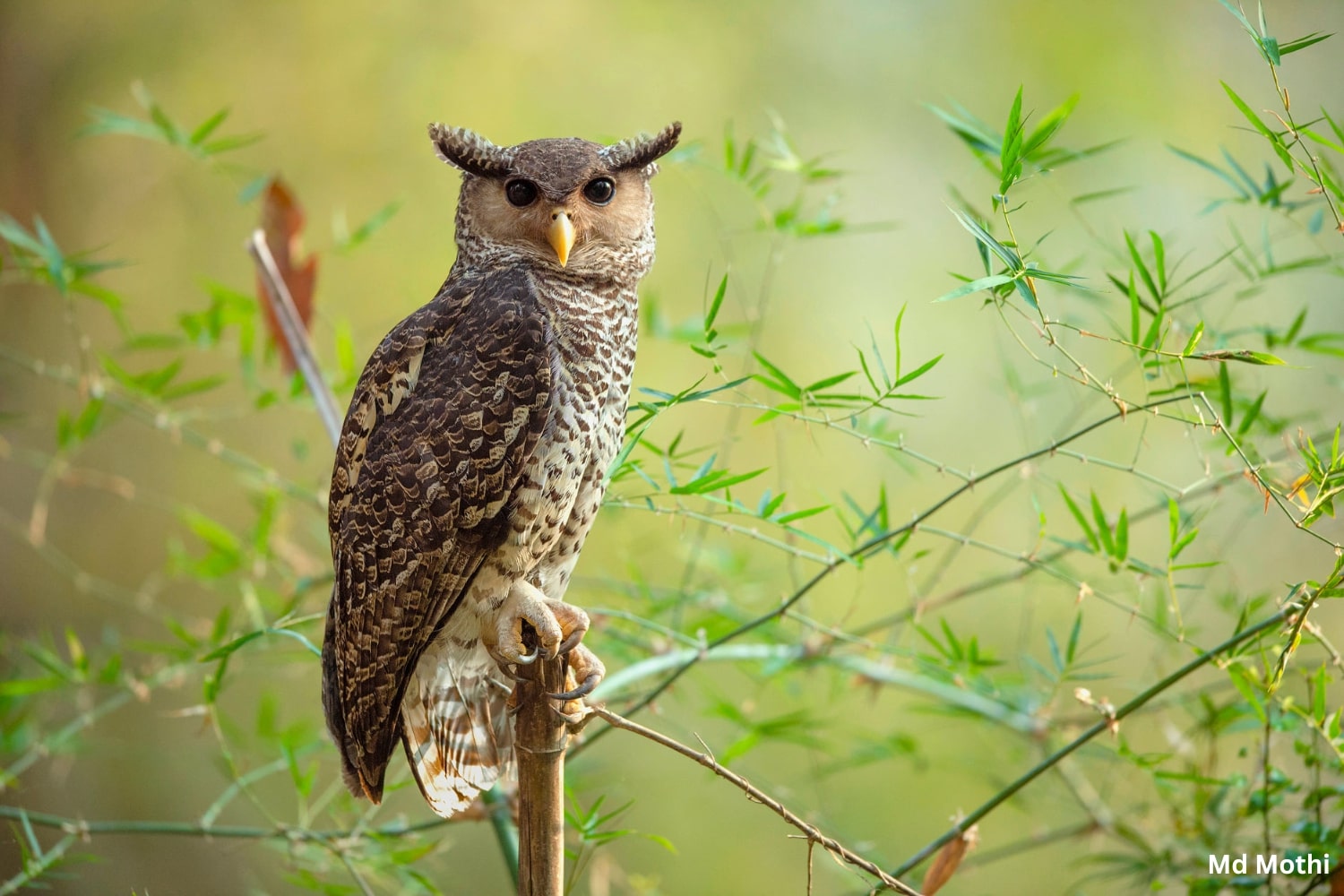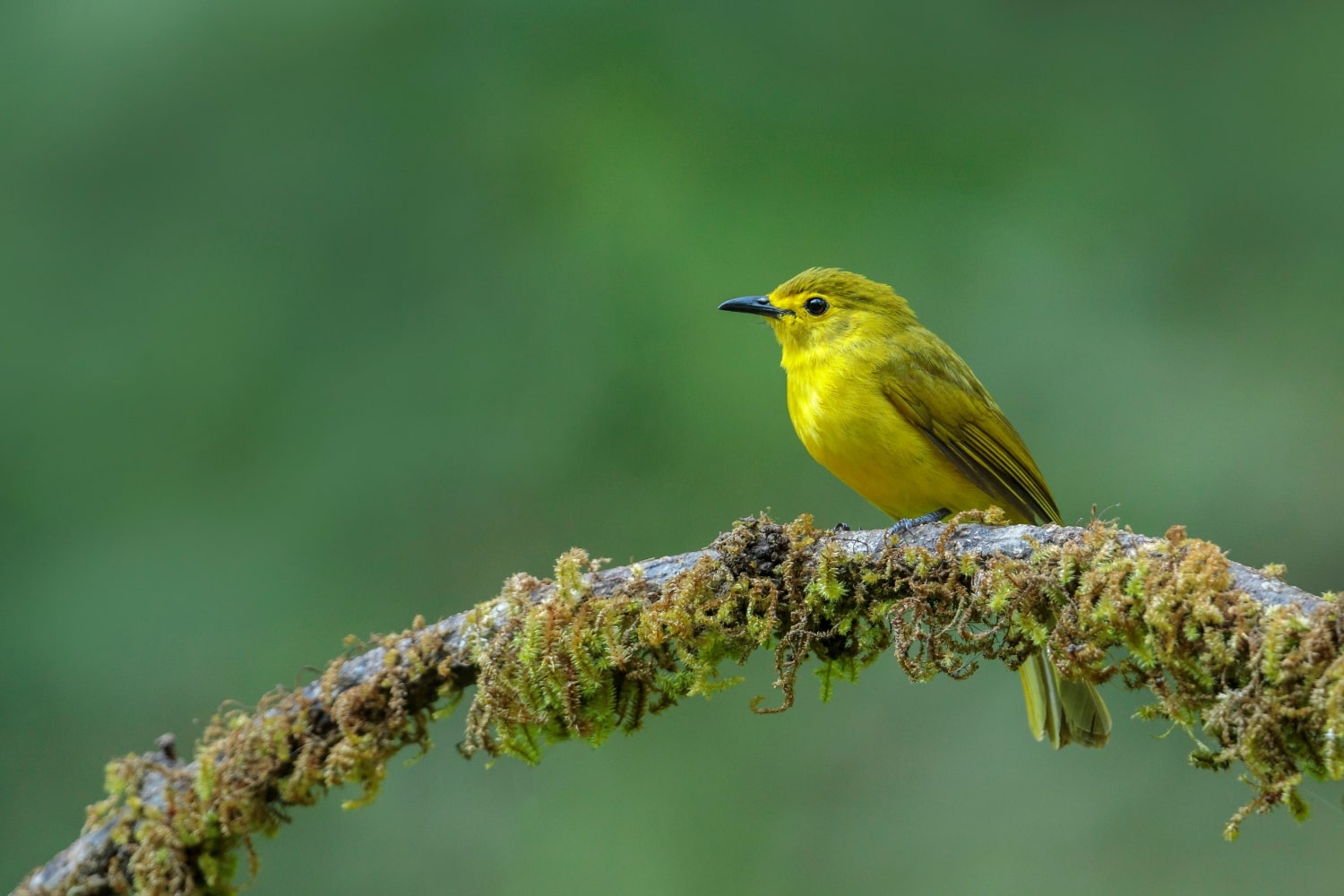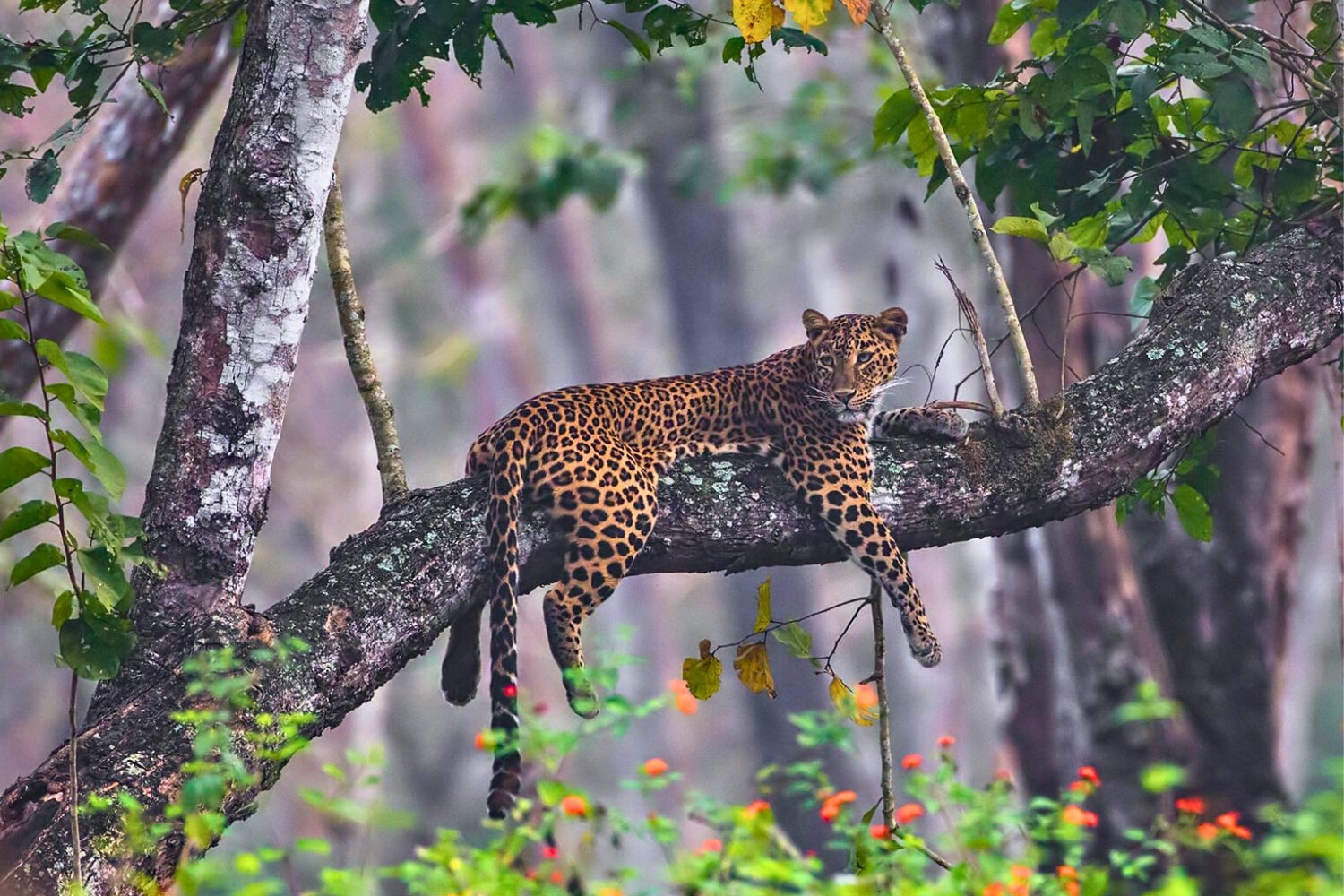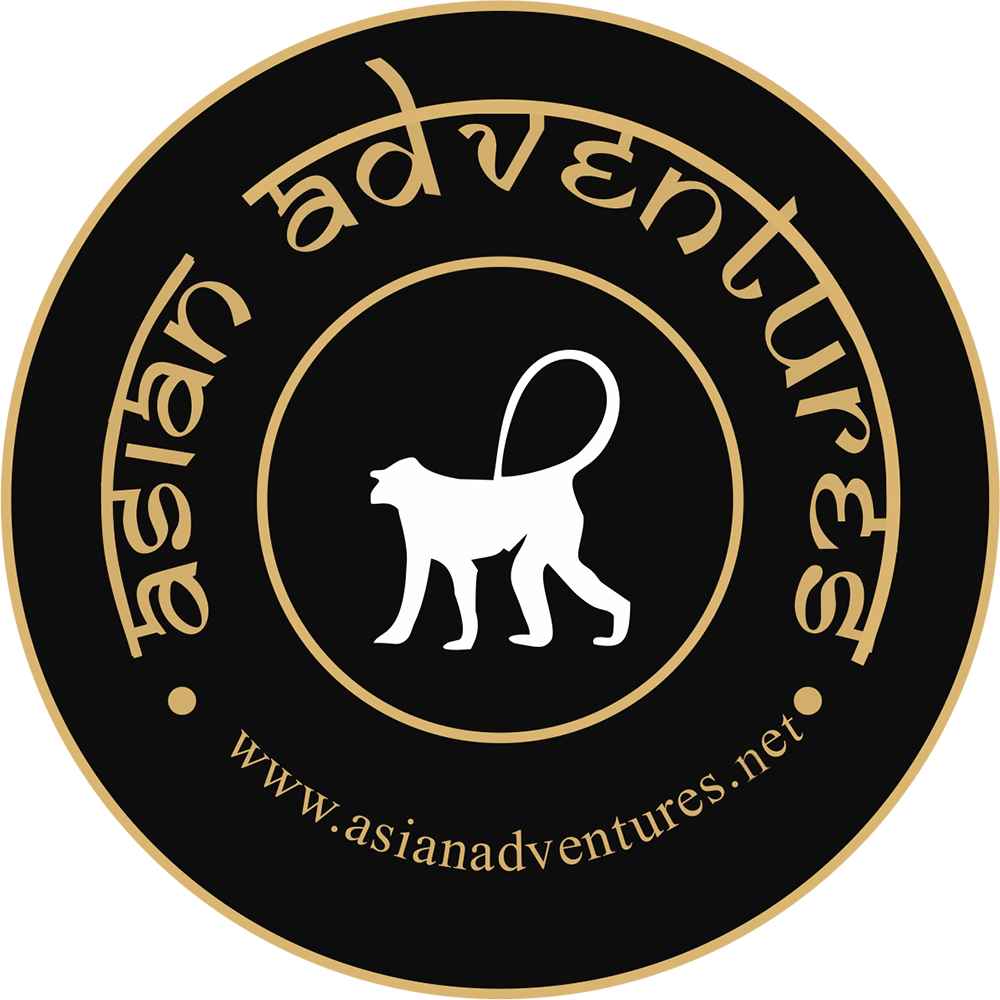Overview
Discover the Unique Birds and Mammals of South India on Our Exclusive Tours, South India is known for its species richness, with a great variety of birds and mammals ranging from Asian Elephant and Nilgiri Langurs to the rare Mouse Deer. Bird species found in South India include White-bellied Treepie, Rufous Babbler, Crimson-backed Sunbird, Wayanad and Palani Laughingthrushes, Blue-winged Parakeet, Malabar Grey Hornbill, Mottled Wood Owl, Sri Lanka Bay Owl, Oriental Scops Owl, Brown Fish Owl, and Spot-bellied Eagle Owl. You should also be able to sight the Red Spurfowl, Grey Junglefowl, Indian Pitta, and the Grey-headed Fish Eagle.

Meals: On Own
Accommodation: Goldfinch Retreat
Arrive in Bangalore in the evening. You will be met and transferred to the hotel.
Overnight stay.

Meals: Breakfast
Accommodation: Hotel Green
After breakfast, checkout and drive to Mysore en route stopping at Ranganthittu Bird Sanctuary. Set amidst the scenic lush green gardens, Ranganthittu Bird Sanctuary is a delight for birders and wildlife photographers. The unique riverine habitat of Ranganthittu boasts more than 200 species of migratory and native birds.
Later, drive to Mysore. Arrive in Mysore, and check in to the hotel.
Overnight stay.

Meals: Breakfast in Mysore, Lunch and Dinner in Mudumalai
Accommodation: Jungle Hut
After the morning birding session. Check out at 1100 hrs and drive to Mudumalai (87 km / 2 hr.). On the way, you can stop for bird watching. Species may include Small Pratincole, Red Avadavat, and Red-naped Ibis, plus several others. Arid areas can be briefly checked for Ashy-crowned Sparrow-Lark. Stopping along the road at Mudumalai is not permitted. However, your guide knows where you can pull off the road to explore some excellent dry scrub habitat that is sure to add some new species to the list.
Overnight stay.

Meals: Breakfast, Lunch, and Dinner
Accommodation: Jungle Hut
Spend the full day in Mudumalai. Mudumalai National Park in Tamil Nadu is a tiger reserve with an area of 900 square km. In the dense moist deciduous forests of this area the upper canopy reaches heights of 30 m and valuable hardwoods like teak and rosewood are also to be found here. This is one of the finest habitats of the Asian Elephant. Drained by the Moyar River, its open forest makes it easy for visitors to see the Elephant and Gaur in natural surroundings. The park has good facilities for viewing wildlife, which include Gaur, Elephant, Sambar, Chital, and even the occasional Tiger or Leopard. Among other mammals are the Muntjac (or Barking Deer), Chevrotain (or Mouse Deer), Wild Boar, Indian Giant Squirrel, Slender Loris, Langurs and Macaques. The Park has about 250 species of birds, including the Malabar Trogon, Malabar Pied Hornbill, White-bellied Woodpecker, Indian Pitta, and Green Imperial Pigeon.

Meals: Breakfast in Mudumalai
Accommodation: Fortune Resort Sullivan Court, Ooty
Morning birding in Mudumalai. After an early lunch, drive to Ooty (46 km / 2 hr.). Arrive at Ooty and check in to the hotel. Rest of the day birding/sightseeing in the Ooty area.
Overnight stay.
Key species: Grey Junglefowl, Black Eagle, Changeable Hawk-Eagle, Greater Flameback, Blue-winged Parakeet, White-cheeked Barbet, Vernal Hanging Parrot, Southern Hill Myna

Meals: Breakfast in Ooty
Accommodation: Nexstay Golden Fern Resort
After the morning birding session in Ooty, checkout from the hotel. Proceed to Chinnar (194 kms / 6 hrs.). Reach Chinnar, birding around the hotel, if time permits.
Overnight stay.

Meals: Breakfast in Chinnar, Lunch and Dinner in Munnar
Accommodation: Olive Brook
After breakfast, check out and drive to Munnar (02 hrs.) stopping en route for bird watching. Arrive in Munnar in the evening where you will stay for 3 nights.
Evening birding around the hotel.
Overnight stay
Key species: Nilgiri Tahr, Grey Junglefowl, Common Hawk-Cuckoo, Southern Hill Myna, Golden-fronted Leafbird, Orange Minivet

Meals: Breakfast, Lunch, and Dinner
Accommodation: Olive Brook
Birding in the Sholas in and around Munnar. We will look for Nilgiri Tahr on our visit and will focus on the endemics listed above along with all the other resident species of the area.
Overnight stay.
Key species: Nilgiri Tahr, Grey Junglefowl, Common Hawk-Cuckoo, Southern Hill Myna, Golden-fronted Leafbird, Orange Minivet

Meals: Breakfast
Accommodation: Crown Valley Thekkady
After breakfast, check out and drive to Periyar (03 hrs).
Reach Periyar, and check in to the hotel. The Periyar wildlife sanctuary in Thekkady is spread across 777 sq km of which 360 sq km is thick evergreen forest. Noted for its geomorphology, diversity of wildlife, and scenic beauty, the sanctuary was declared a Tiger Reserve in 1978.
Overnight stay.

Meals: Breakfast
Accommodation: Crown Valley Thekkady
You will have a full day in Periyar. The day would be spent in the company of the exotic and varied wildlife of the national park. The rendezvous with the wild begins with one of the best things to do in Periyar.
Overnight stay.

Meals: Breakfast in Periyar, Lunch and Dinner in Thattekad
Accommodation: Seventh Heaven
Today proceed to Thattekad (67 km / 2 hr.). Reach Thattekad. Check-in into the resort. You can go bird watching.
Overnight stay.
Key species: Sri Lanka Bay Owl, Sri Lanka Frogmouth, Grey-fronted Green Pigeon, Green Imperial Pigeon, Indian Swiftlet, Malabar Trogon, Malabar Barbet

Meals: Breakfast, Lunch, and Dinner
Accommodation: Seventh Heaven
Your guide will meet you early in the morning for two full days of guided birding at Thattekad Bird Sanctuary.
Overnight stay.
Key species: Wayanad Laughingthrush, Blue-winged Parakeet, Flame-throated Bulbul, Malabar Woodshrike, Nilgiri Thrush

Meals: Breakfast
Accommodation: None
Today drive to Cochin Airport (43 km / 1.5 hr.) to connect flight back to home.
Tour Ends.
Highlights
- Nilgiris’ and Western Ghats endemic avifauna
- Splendour of the Nilgiri Hills
- Wildlife experience of Asian Elephant, Tiger, Gaur, Spotted Deer, Nilgiri Tahr, Sambar, Muntjac
- The old British hill station of ‘Ooty’.
- Nilgiri Mountain Railway, a World Heritage Site
- Traditional Cuisine and a Glimpse of the Culture of Karnataka
- Pristine forests
- Amazing landscape
- Excellent food
Included
- Accommodation for 01 night in Bangalore Accommodation for 01 night in Mysore
- Accommodation for 02 nights in Mudumalai Accommodation for 01 night in Ooty
- Accommodation for 01 night in Chinnar Accommodation for 03 nights in Munnar
- Accommodation for 02 nights in Thekkady Accommodation for 03 nights in Thattekad
- Dedicated birding guide in South India from Day 02-15 Transport for the entire tour
- Meals as per the itinerary All Park Entrance fee | All Taxes
Video
Location
Stories
FAQ's
- What is the best time to visit South India for bird watching and wildlife photography?
-
The best time to visit South India for bird watching and wildlife photography is from November to March. During this period, the weather is pleasant, and bird activity is high due to migration patterns and breeding seasons.
- What kind of clothing should I pack for this trip?
-
Pack lightweight, breathable clothing in neutral colors to avoid disturbing wildlife. Include a warm jacket for cooler mornings and evenings, a rain jacket for unexpected showers, and sturdy walking shoes or hiking boots. Don't forget a hat, sunglasses, and sunscreen.
- What photography equipment is recommended for this trip?
-
A DSLR or mirrorless camera with telephoto lenses (200-500mm) for bird photography, a sturdy tripod, extra batteries, memory cards, and a lens cleaning kit. A wide-angle lens is also useful for landscape shots.
- Do I need any special permits for visiting these wildlife areas?
-
Yes, certain areas require permits. Our guide or office will arrange these for you, but it’s good to carry identification and follow the instructions provided to ensure smooth access.
- Are there any health precautions I should take before the trip?
-
It's advisable to consult with your doctor about necessary vaccinations and medications, but largely it is safe. Carry a basic first aid kit, and make sure to stay hydrated and protected from insects with repellents.
- What is the accommodation like during the tour?
-
Accommodation ranges from comfortable hotels in cities to rustic lodges in wildlife reserves. All accommodations are selected to provide a balance of comfort and proximity to nature.
- Can I rent photography equipment locally if needed?
-
While it's best to bring your own gear, some major cities like Bangalore and Cochin may have rental services. However, availability can be limited, so it's recommended to bring your own equipment.
- How physically demanding is this itinerary?
-
The itinerary includes moderate physical activity, such as walking on trails, climbing small hills, and occasional long drives. Participants should be in good health and prepared for varying weather conditions and terrain.
- What kind of wildlife can I expect to see in these locations?
-
Expect to see a diverse range of species, including Indian Elephants, Tigers, Leopards, Indian Bison (Gaur), Nilgiri Tahr, and numerous bird species like the Malabar Trogon, Great Hornbill, and various endemic species of the Western Ghats.
- Are there opportunities for night photography or nocturnal wildlife viewing?
-
Yes, night walks in locations like Ooty and Top Slip offer chances to see nocturnal wildlife such as owls, nightjars, and small mammals. Your guide will assist in using appropriate techniques for night photography.
- What safety measures are in place during safaris and night walks?
-
Safety measures include travelling with experienced guides, following park rules, staying within designated areas, and using appropriate gear like leech socks in certain areas. Guides will provide safety briefings before activities.
- How do I maximize my chances of seeing a tiger or leopard?
-
The best chances of seeing big cats like tigers and leopards are during early morning or late afternoon safaris when these animals are most active. Staying quiet, being patient, and following the guide's instructions will increase your chances. We will try in Mudumalai.
- What kind of meals are provided during the tour?
-
The best chances of seeing big cats like tigers and leopards are during early morning or late afternoon safaris when these animals are most active. Staying quiet, being patient, and following the guide's instructions will increase your chances. We will try in Mudumalai.
- Can I charge my electronic devices at the accommodations?
-
Most accommodations provide facilities to charge electronic devices. However, it’s advisable to carry a universal adapter and extra batteries or power banks for remote locations.
- Is it safe to drink tap water in these locations?
-
It’s recommended to drink bottled or filtered water to avoid any health issues. Most accommodations provide safe drinking water, and it’s wise to carry bottled water during excursions.
- Are there restroom facilities available during safaris and long drives?
-
Restroom facilities are available at lodges and designated areas in national parks. During long drives, your guide will make stops at clean and safe facilities but there are not many.
- What should I do if I encounter dangerous wildlife?
-
Always follow the guide’s instructions. Maintain a safe distance, avoid sudden movements or loud noises, and never attempt to approach or feed wild animals. Your guide is trained to handle such situations.
- Can I bring my children on this tour?
-
While children are welcome, the itinerary includes activities that require patience and quietness, which may be challenging for very young children. Older children with an interest in wildlife and photography will enjoy the experience.
- How do I prepare for high altitudes in locations like Ooty and Munnar?
-
To prepare for high altitudes, stay hydrated, avoid strenuous activities on the first day, and get adequate clothing. If you have a history of altitude sickness, consult your doctor before the trip.
- What are some tips for ethical wildlife photography?
-
Ethical wildlife photography includes respecting wildlife by maintaining a safe distance, not disturbing natural behaviors, avoiding flash photography that can startle animals, and adhering to park regulations. Always prioritize the welfare of the animals and their habitats.



































